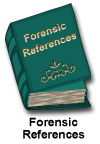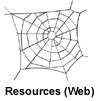|
|
 |
The
required readings for this unit are:
 Australia
Australia |
Required
Reading(s)
|
 |
Insert article
here
 Canada
Canada |
Required
Reading(s)
|
 |
Berman,
H. (2001). Children and war: Current understandings
and future Directions. Public Health Nursing, 18(4),
243-252. Retrieved December 28, 2002, from
Academic Search Premier database: http://search.epnet.com/direct.asp?an=4982369&db=aph
- During
the last decade, the number of children whose lives
have been disrupted by war, oppression, terror,
and other forms of conflict has grown tremendously.
When the United Nations High Commission for Refugees
was first established during the 1950s to provide
international protection to refugees following World
War II, it was estimated that there were 1.5 million
refugees and displaced persons. Today there are
approximately 14 million, about three-fourths of
whom are women and children. Although the experiences
of refugee children and adolescents vary considerably,
many have witnessed or experienced the death or
murder of loved ones. Upon resettlement, they face
numerous challenges. Research with this population
is a relatively new area of investigation, but there
is evidence that many of these young people experience
long-term physical and emotional health problems.
In this article, current research findings are reviewed,
the widespread emphasis in the literature on post-traumatic
stress disorder (PTSD) is critically examined, future
research directions are suggested, and implications
for public health nurses are addressed
|
 International
International |
Required
Reading(s)
|
 |
Oulton,
J. A. (2001). Inside view. International Nursing
Review, 48(4), 207. Retrieved December 28, 2002,
from Academic Search Premier database:
http://search.epnet.com/direct.asp?an=5635656&db=aph
- Ponders
on the role of nurses in taking care of the victims
of terrorism. Impact of the September 11, 2001 terrorist
attacks in the United States; Advice of the International
Council of Nurses; Ethical standards on the care
of terrorist victims.
|
 United Kingdom
United Kingdom |
Required
Reading(s)
|
 |
Insert article
here
 United States
United States |
Required
Reading(s)
|
 |
Paquette,
M. (2001). The aftermath of violence. Perspectives
in Psychiatric Care, 37(4), 113-115.
Retrieved December 28, 2002, from Academic Search Premier
database:
http://search.epnet.com/direct.asp?an=5992120&db=aph
- Editorial.
Comments on the aftermath of the September 11, 2001
terrorist attacks on the United States. Reaction
of Fatima, mother of suicide bomber Izze-dine Masri,
to his son's death; Mental health status of the
suicide bombers; Way in which psychiatric nurses
can make a difference and respond to threats of
terrorism.
|
Databases
For the full text article online,
sleuth the 'University
of Calgary/ Library/ Article Indexes':
Directions:
- Select
- Indexes and abstracts with links to full text articles
- Select
- Academic Search Premier or Expanded Academic ASAP
- Select
- Connect
-
Fill in
User ID and Pin
- Fill
in search words:
- terrorism
and international ________
- * and
mass disasters
Top of Page
|
 |
 |
The
'recommended only' readings for this unit are the following:
 Australia
Australia |
Recommended
Reading(s)
|
 |
Insert article/book/chapter
here
 Canada
Canada |
Recommended
Reading(s)
|
 |
Kondro,
W. (2001). Canada stocks up on smallpox vaccine, pushes
bioterrorism training. Canadian Medical Association
Journal, 165(10), 1371. Retrieved December 28, 2002,
from Academic Search Premier database: http://search.epnet.com/direct.asp?an=5460452&db=aph
- Focuses
on a Canadian health-security package, created in
response to the September 11, 2001 terrorist attacks
on the United States. How Canadian physicians, nurses,
paramedics and other health care professionals may
be asked to take refresher courses on biohazards;
Decision of the government to purchase chemical
antidotes and antibiotics to treat people exposed
to nerve agents and viruses that cause viral hemorrhagic
fever.
|
 International
International |
Recommended
Reading(s)
|
 |
Weiss, M.
(2001). The body of the nation: Terrorism and the embodiment
of nationalism in contemporary Israel. Anthropological
Quarterly, 75(1), 37-63. Retrieved July 28, 2002,
from ProQuest database.
- Israel
is a country whose nationalism arguably hinges on
a military conflict routine. Weiss illustrates how
national identity is inscribed in the Israeli body,
and how "the body of the nation" arises
following critical events such as terrorist bombings.
|
 United Kingdom
United Kingdom |
Recommended
Reading(s)
|
 |
Insert article/book/chapter
here
 United States
United States |
Recommended
Reading(s)
|
 |
Anteay, C. M.
& Williams L. A. (1998). The Oklahoma City Bombing.
Nursing98, (March), 52-55.
- Note this
article on the deadliest act of domestic terrorism in
the history of the United States.
Mee, C. L. (2001).
Spirit of the American nurse. Nursing, 31(10), 6.
Retrieved December 28, 2002, from Academic Search Premier
database
http://search.epnet.com/direct.asp?an=5860371&db=aph
- Comments on
the efforts of nurses after the terrorist attacks
in the United States. Availability of volunteer staff;
Implementation of disaster plan of medical centers; Grief
of nurses and colleagues over loss of rescue workers
Murray, K. (2001).
American nurses prepare for future terrorist attacks. Nursing
Standard, 16(8), 6. Retrieved July 28, 2002, from ProQuest
database.
- NURSING ORGANISATIONS
in America are working on an education and preparation
plan to deal with the threat of bio-terrorism.
- ANA president
Mary Foley said the organisation was committed to developing
a 'co-ordinated, collective and educational' plan to ensure
registered nurses were prepared for future terrorist attacks,
particularly those involving biological agents or chemical
or radiation exposures. Ms Foley said: 'As the nation
braces itself for possible future terrorism attacks, nurses
are vital in ensuring that hospitals and communities are
prepared to handle emergency and disaster relief efforts,
Nurses, like other healthcare workers, need to be educated
in this area.'
Winfrey, M. E.
(1999). [Foreword]. Critical Care Nursing Quarterly,
22(1), v-vi.
- In terms of
trauma and critical care, many of the great strides in
these subspecialties occurred in response to war. Today,
however, terrorism has replaced war as the ultimate in
man's inhumanity to man. The science of mass casualty
care, for example, has been redefined by our studies of
the World Trade Center and Oklahoma bombings. What a sad
commentary it is that the health care industry must struggle
to keep pace with man's homicidal ingenuity (Winfrey,
1999).
- Society's
attempts to create order and control resulted in laws
that everyone, including nurses, physicians, and patients,
are expected to abide by as citizens. When regulations
are ignored, civil rights abrogated, and laws violated,
forensic nursing comes to the forefront.
Top of Page
|

|
Additional
references for this unit can be found in 'forensic
references'
of the forensic sourcebooks.
- Sleuth
'forensic reference' database for:
Top of Page
|

|
Video's
recommended for this unit are:
|
|
Resources
(Video)
|
 |
Insert video
here
Top of Page
|

|
The
required websites to sleuth for this unit are the following:
 Australia
Australia |
Resources
(Web)
|
 |
Insert website
here
 Canada
Canada |
Resources
(Web)
|
 |
Mercy Killing
http://www.rights.org/deathnet/Sneiderman.html
- Note:
Describes the case and conviction of Robert Latimer
of Winnipeg in 1997.
- Mr.
Latimer was convicted of second-degree murder in
the mercy killing of his severely disabled twelve
year old daughter through asphyxiation by gas fumes,
as Canada doesn't allow a mercy killing defense
to the charge of murder. Maureen
|
 International
International |
Resources
(Web)
|
 |
International
Association of Forensic Nurses (2000). Position Statement
on Terrorism (10/2002). IAFN Website. Retrieved June
15, 2002, from http://www.forensicnurse.org
- Note - the
position statement on terrorism.
 United Kingdom
United Kingdom |
Resources
(Web)
|
 |
Insert website
here
 United States
United States
|
Resources
(Web)
|
 |
Insert article
here
Top of Page
|
 |
For
additional websites on this unit, sleuth 'forensic
websites' in the forensic sourcebooks.
Top of Page
|
 |
|